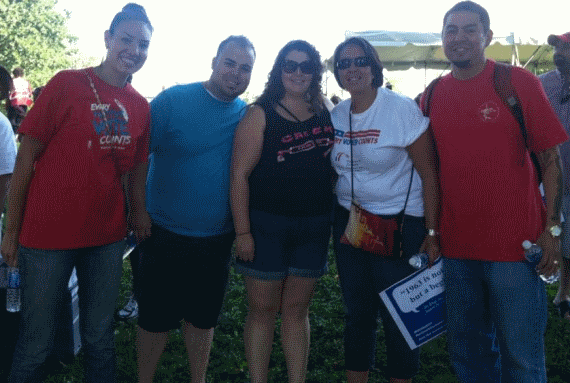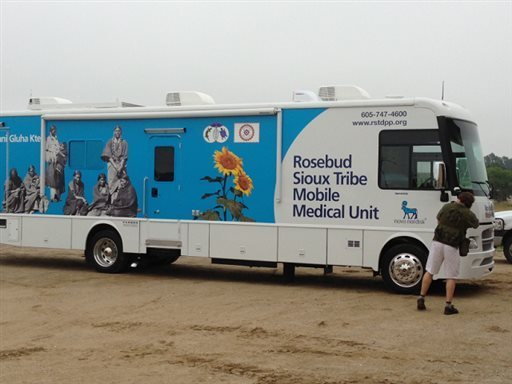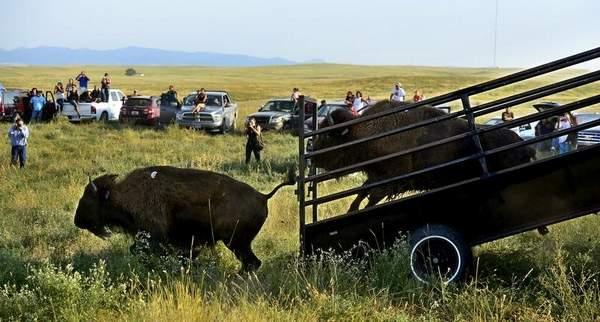FBI Agrees To Communicate With Yakama Police Before Entering Yakama Indian Country
Source: Intercontinental Cry
AUGUST 26, 2013 – Toppenish, WA – The Confederated Tribes and Bands of the Yakama Nation have reached an unprecedented, out-of-court settlement with the United States Department of Justice (DOJ), principally the Federal Bureau of Investigation (FBI).
The settlement fully and finally resolves Yakama’s lawsuit against the FBI and several of its sister law enforcement agencies, as well as various county and municipal police agencies from Washington State, Mississippi and Virginia. That suit arose from a federal task force raid of Yakama Reservation trust lands that commenced at dawn on February 16, 2011. Upon word of the settlement on August 15, 2013, U.S. District Court Judge Rosanna Peterson closed the case.
“Today is historic. The United States has agreed to honor the law enforcement protocols set forth in the Yakama Treaty of 1855. That is unprecedented.” said Yakama Nation Tribal Council Chairman and former police chief Harry Smiskin. “From today forward the FBI will communicate with Tribal Police before they enter Yakama Indian Country. I am confident that the resulting cooperation between federal and tribal cops will greatly improve public safety throughout our territories.”
Through Article II of the Yakama Treaty of 1855, the Yakama Reservation was set apart for the exclusive use and benefit of the Yakama Nation. To that end, the Yakama Treaty makes clear that no “white man” shall be permitted to reside upon Yakama Indian Country without permission from the Yakama Nation. Federal Treaty negotiators explained to the Yakama that Article II meant that no one – not even United States agents, with the lone exception of today’s Bureau of Indian Affairs agents – would be permitted to step onto Yakama Reservation lands without the Yakamas’ consent.
Also, in Article VIII of the Yakama Treaty, the United States and Yakama Nation set forth a process for delivering Yakama criminals or suspects who are in Yakama Indian Country to federal authorities. Federal Treaty negotiators explained to the Yakama that Article VIII meant there would be a consultation process between the Head Chief or all of the Yakama Chiefs, and the United States, relative to any Yakama alleged to have committed a wrong, before they might be delivered up to federal authorities.
The settlement agreement between Yakama and DOJ is called, “Recitals of Joint Law Enforcement Goals.” It recites that:
• “The Parties have a common interest in preventing violence, fighting crime in, and ensuring the safety and security of Yakama Indian Country…”
• “The United States embraces the federal government’s special trust responsibility to and relationship with the Yakama Nation, consistent with the Treaty of 1855, federal law, Executive Orders, and judicial decisions.”
• “The United States acknowledges that the Yakama Nation has no interest in promoting, condoning, or protecting criminal activities by its members; as such, the Yakama Nation will not intentionally harbor fugitives and desires to partner with the United States in law enforcement matters.”
• “The United States recognizes that maintaining a close and cooperative relationship with the Yakama Nation is essential to preventing and combating crime and assisting crime victims.”
• “The United States recognizes that in an age of increasingly complex criminal and national security threats, the common interests of the Yakama Nation and the federal government are best served by appropriate coordination, communication and information-sharing between the Parties.”
• “The Parties agree that it is in the best interests of both governments to identify practical ways to coordinate and communicate effectively with respect to law enforcement matters.”
• “Both Parties commit to acting in good faith to advance and act consistently with these goals.”
The operative provision of agreement provides:
In keeping with its law enforcement duties, DOJ law enforcement remains committed to communicating with Yakama Tribal Police concerning its law enforcement activities in Yakama Indian Country, as operational integrity concerns, including officer and public safety, permit, and will communicate with tribal police at the earliest prudent and practicable opportunity about enforcement operations undertaken in Yakama Indian Country (emphasis added).
In March 2011, the Yakama Nation sued federal law enforcement agencies and several local governments for violating these federal Treaty provisions when raiding a Yakama member-owned business on Yakama trust lands without providing any advance notice to Yakama authorities, and in turn barring Yakama Nation cops who arrived at the scene of the raid to help keep the peace.
Since the summer of 2012, the parties engaged in settlement discussions and negotiations. In June 2013, Yakama reached out-of court settlements with Yakima County, Benton County, and the local governments from Virginia and Mississippi (Yakima Herald Republic).



























